Butterflies and bees are essential pollinators, and one of the best ways to attract them is by planting beautiful perennial flowers. These plants not only add color to your garden but also support local ecosystems. Each flower on this list has a unique feature that draws in pollinators, making them a perfect addition to any outdoor space. Here are some stunning perennial flowers that are sure to invite butterflies and bees to your yard.
Coneflower (Echinacea)
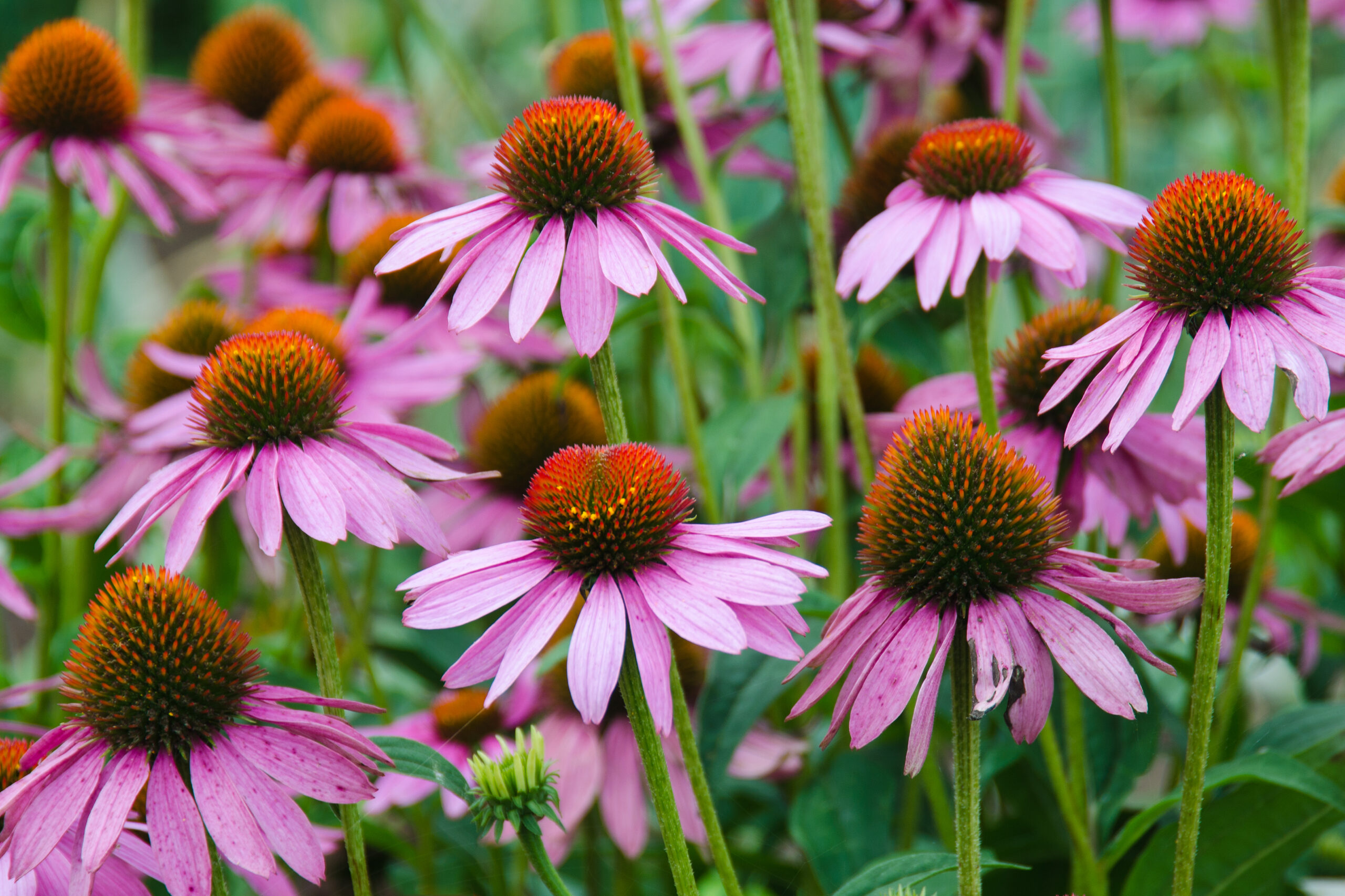
Coneflowers are known for their bright, daisy-like blooms with a distinctive spiny center. Their vibrant pink, purple, and white petals attract a variety of butterflies and bees. They bloom from midsummer through fall, offering a long-lasting food source. Coneflowers are drought-tolerant and thrive in full sun, making them easy to maintain. These hardy perennials also self-seed, ensuring your garden remains full year after year.
Black-Eyed Susan (Rudbeckia)
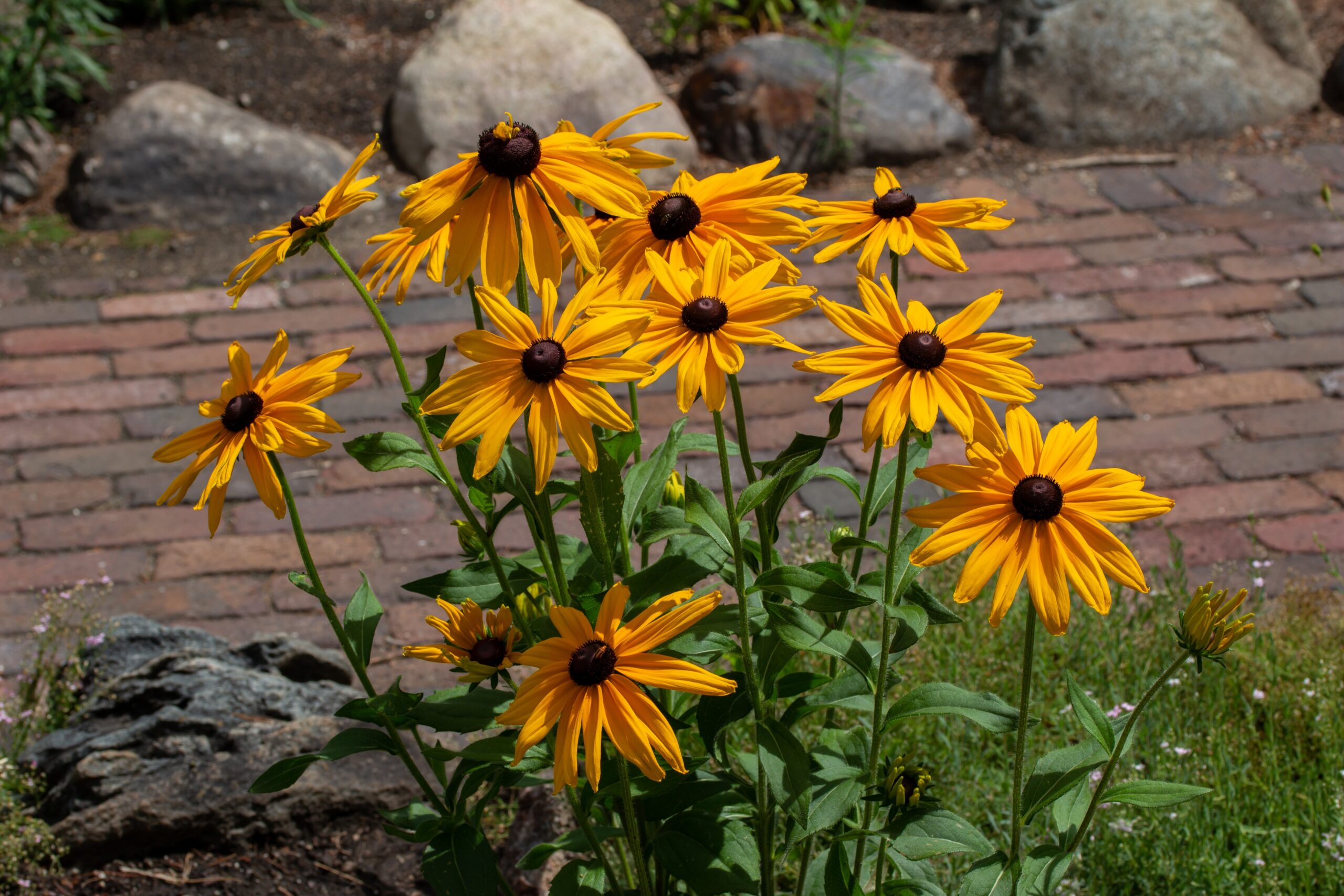
Black-Eyed Susans are cheerful yellow flowers with dark centers, which naturally draw in pollinators. They are resilient plants, handling both drought and poor soil conditions with ease. Their long blooming season stretches from early summer to late fall. Bees are particularly attracted to their nectar-rich centers. These flowers thrive in full sun, making them a low-maintenance yet vibrant addition to any garden.
Bee Balm (Monarda)
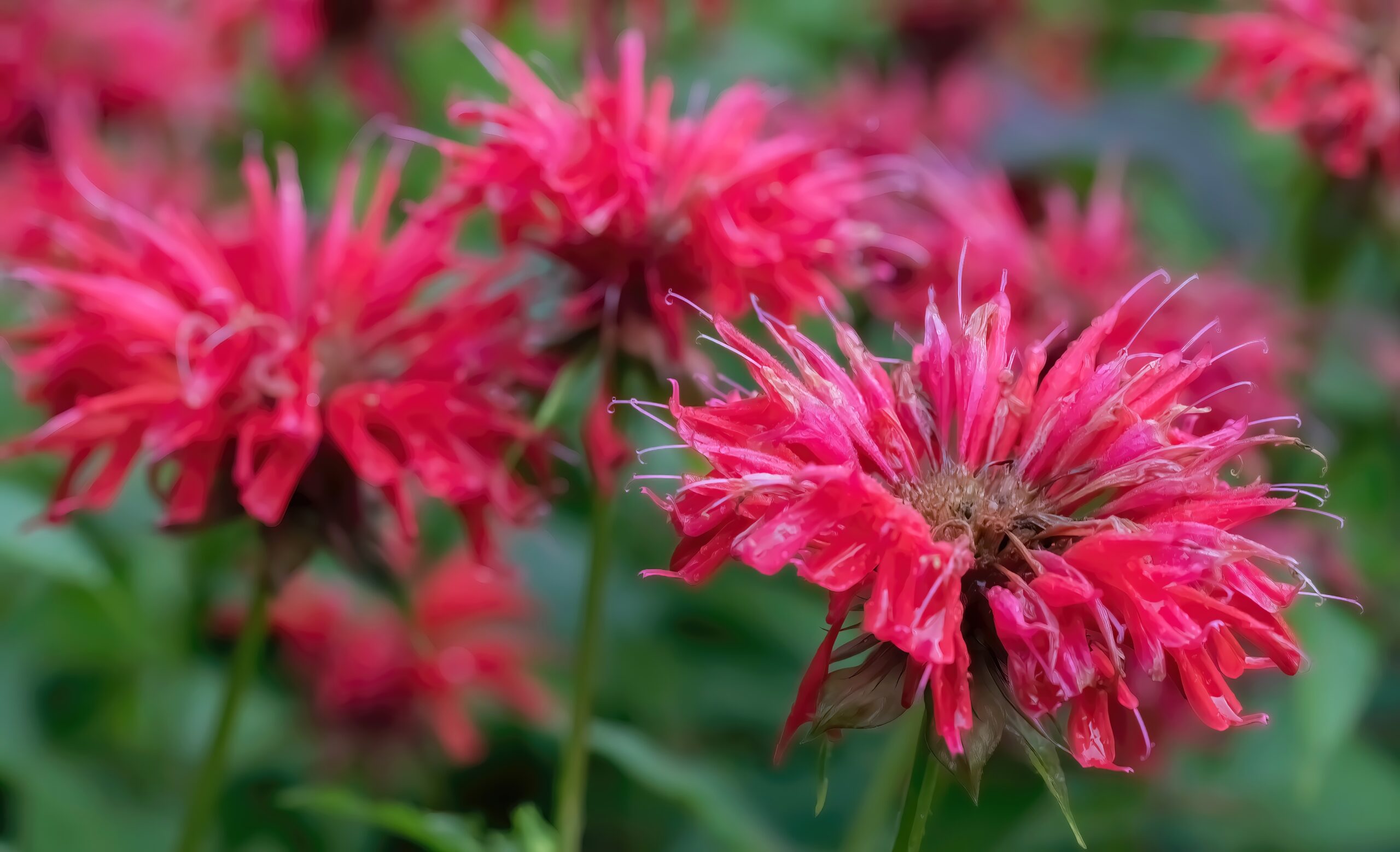
Bee Balm is a favorite among bees, butterflies, and even hummingbirds. Its tubular flowers come in shades of red, pink, and purple. This flower releases a sweet, minty fragrance that attracts pollinators from far and wide. Bee Balm grows best in sunny spots but can tolerate partial shade. Its blooms appear in mid-summer and last well into the fall, providing a consistent nectar source.
Butterfly Weed (Asclepias tuberosa)
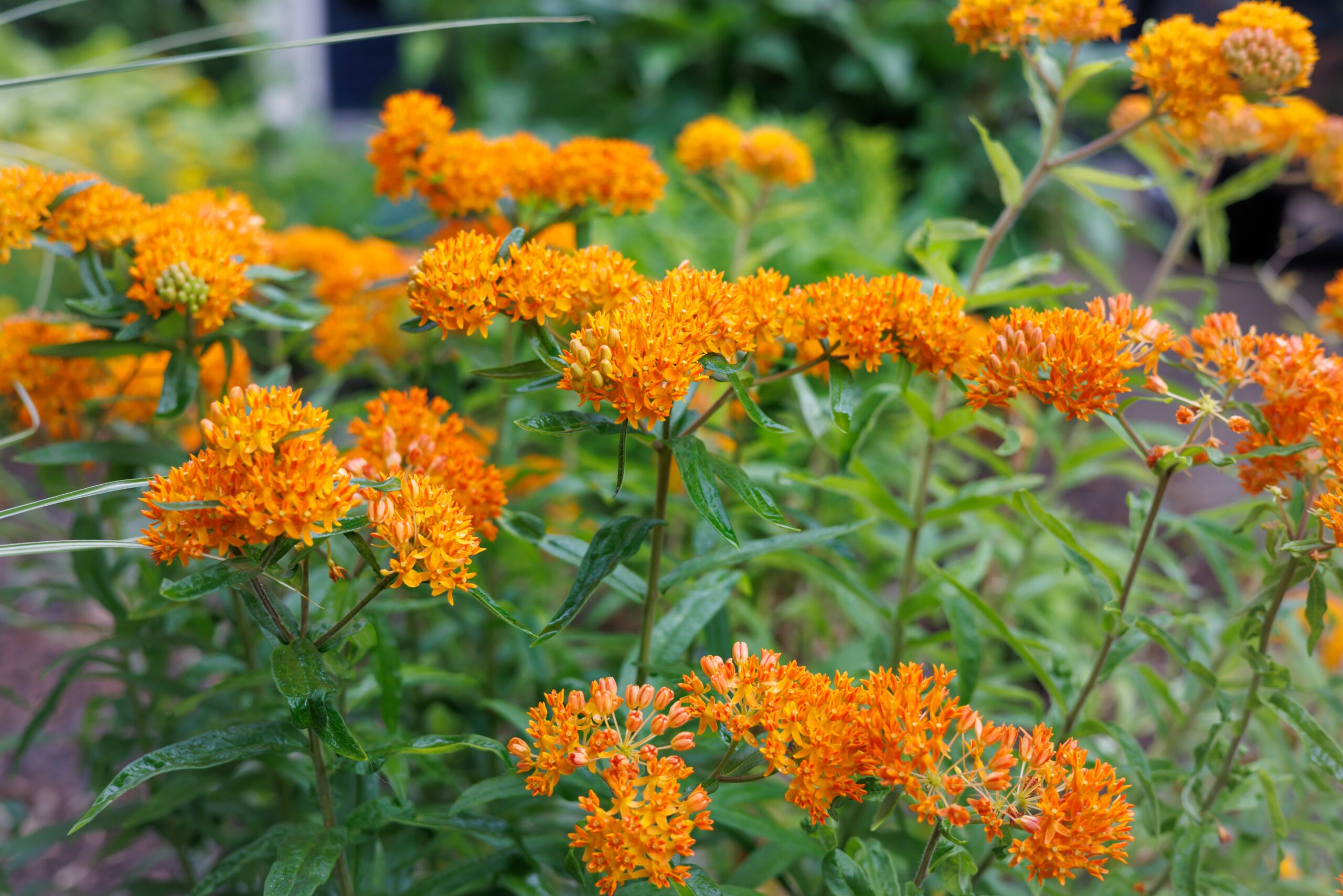
Butterfly Weed is a striking plant with clusters of orange flowers that are irresistible to butterflies. Its bright blooms are not only visually stunning but also provide rich nectar. Monarch butterflies, in particular, rely on this plant for both food and habitat. Butterfly Weed grows well in well-drained soils and requires little water once established. Its drought tolerance makes it an easy-to-grow addition to any pollinator garden.
Lavender (Lavandula)
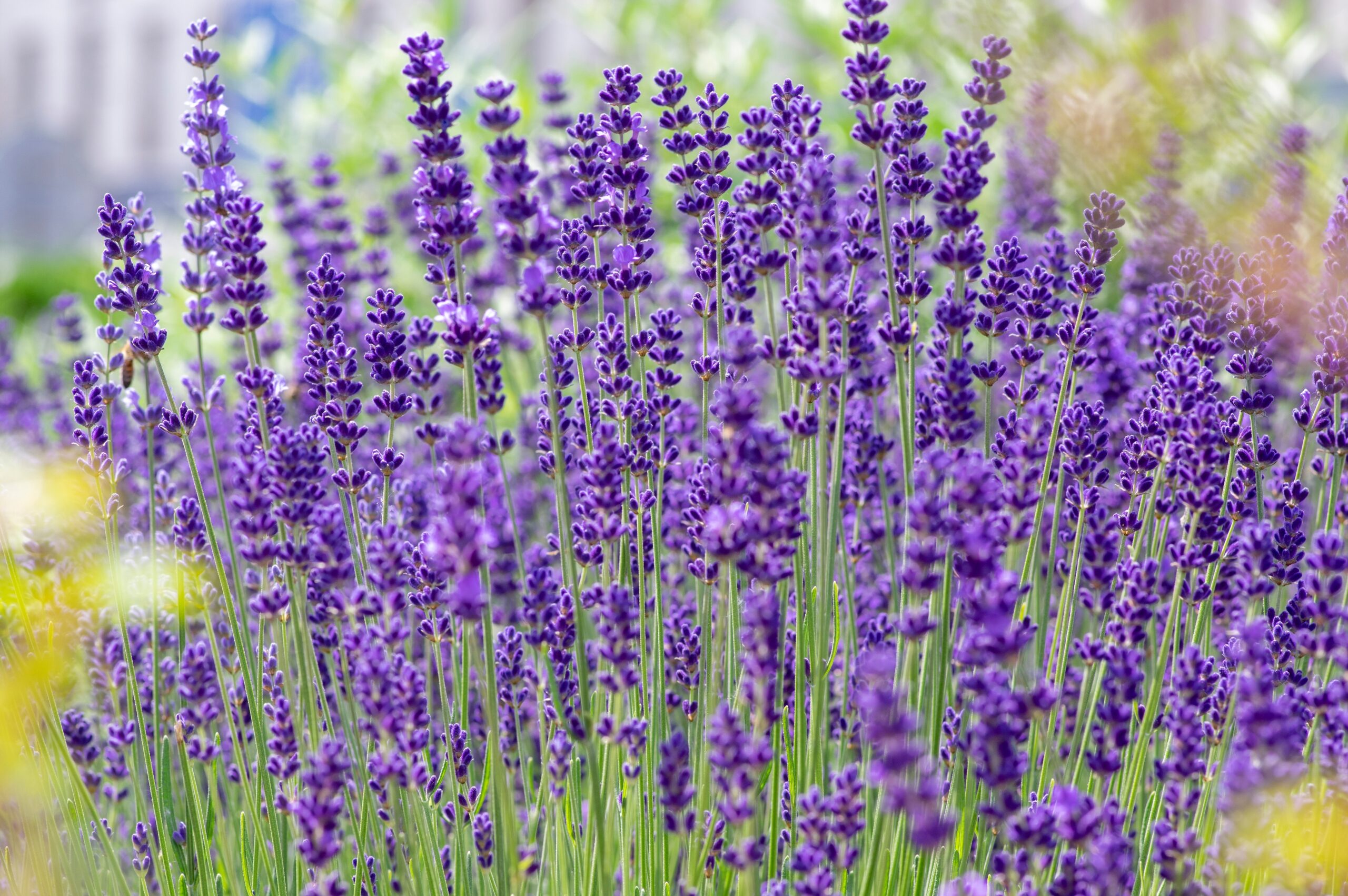
Lavender’s fragrant purple spikes are a favorite among bees and butterflies. Its scent is soothing, and the tiny flowers are packed with nectar. Lavender thrives in full sun and well-drained soil, making it an excellent choice for warmer climates. The plant is drought-tolerant and requires minimal care. It blooms from late spring through summer, providing a long-lasting nectar source for pollinators.
Russian Sage (Perovskia atriplicifolia)
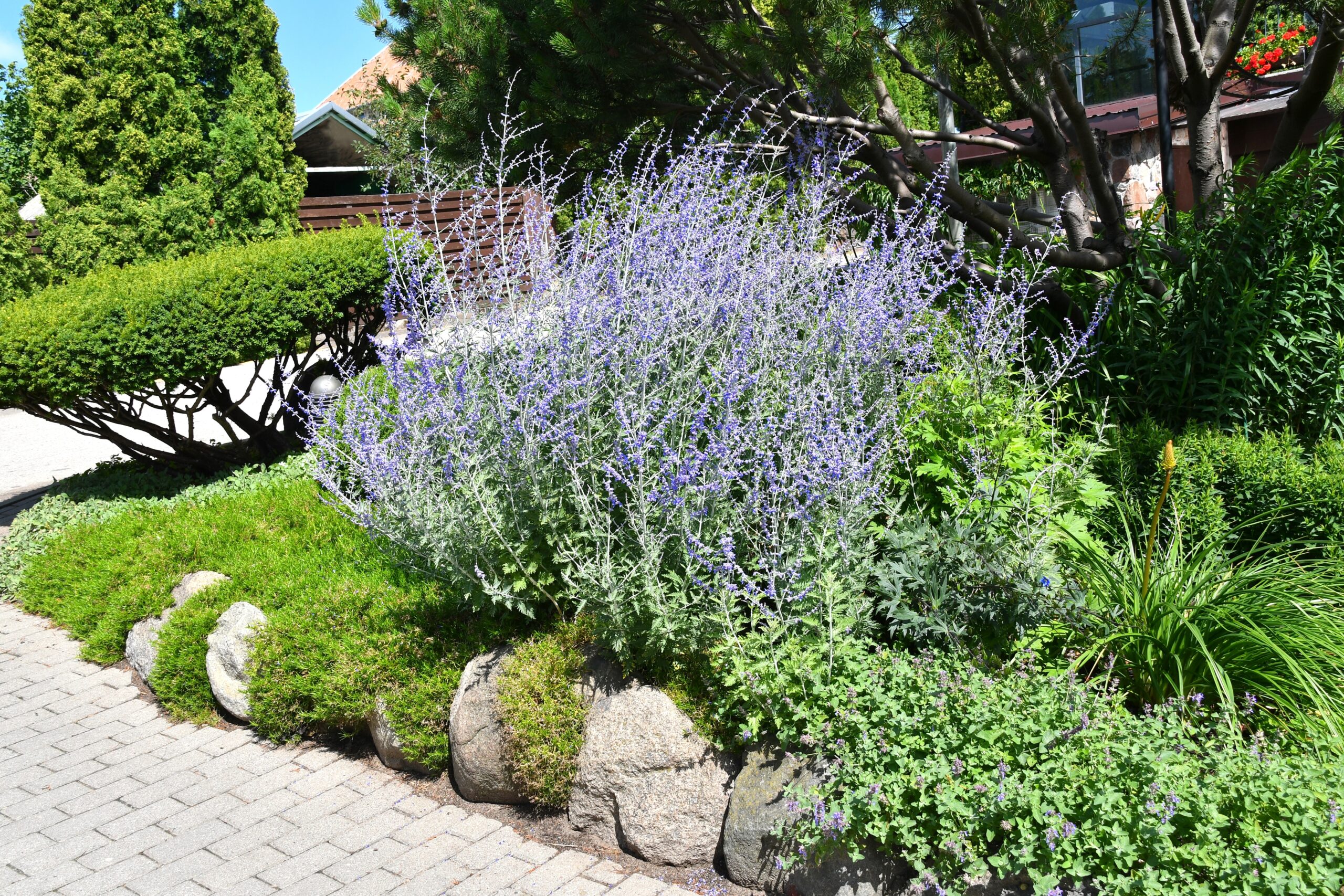
Russian Sage is known for its delicate, silvery foliage and soft lavender-blue flowers. Its airy blooms attract bees and butterflies all summer long. This plant thrives in dry, sunny locations and is both drought-tolerant and deer-resistant. Russian Sage blooms from midsummer to early fall, providing color and nectar for an extended period. Its low-maintenance nature makes it a perfect addition to any pollinator-friendly garden.
Liatris (Blazing Star)
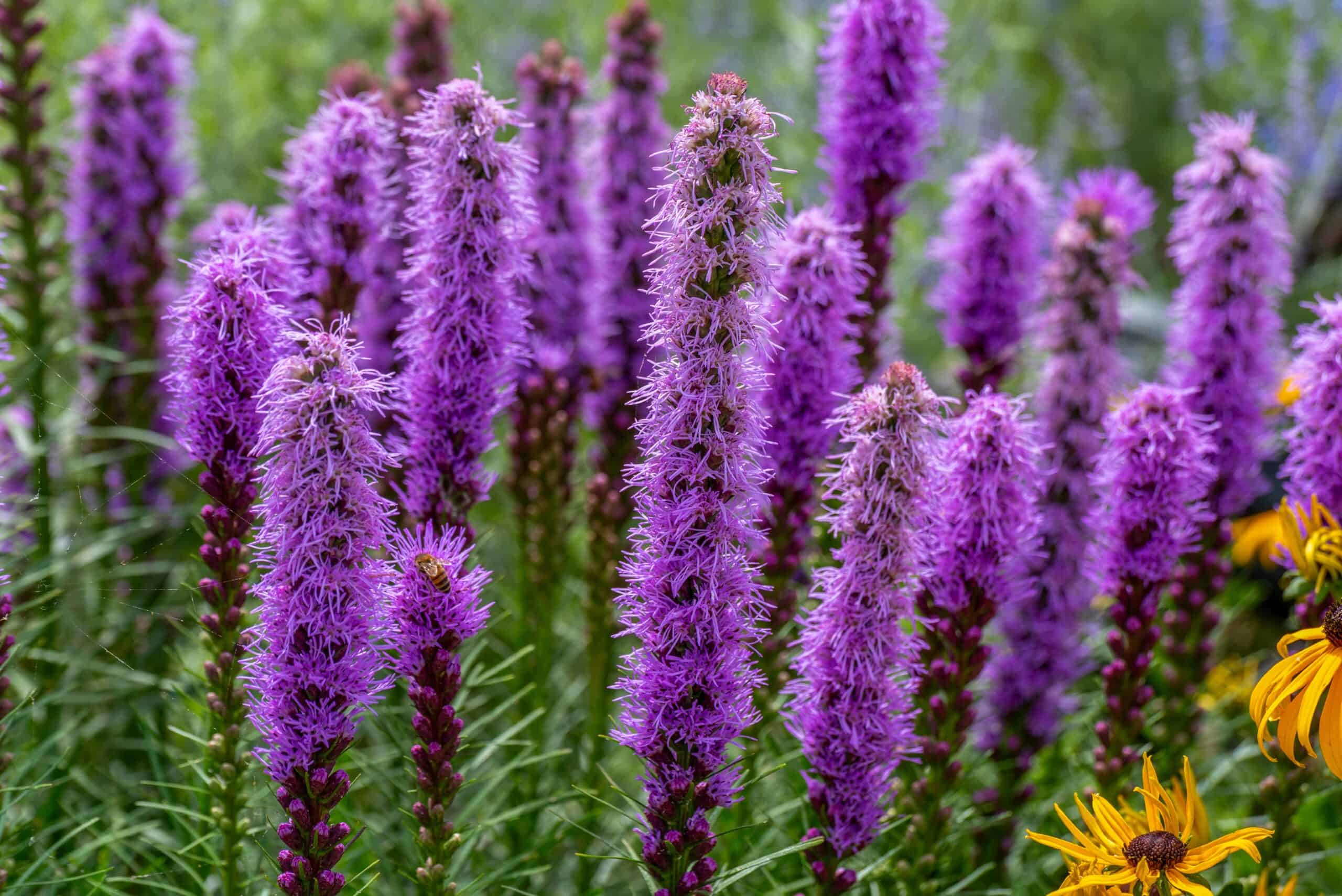
Liatris produces tall, spiky blooms that are a magnet for butterflies and bees. Its purple flowers bloom from the top down, creating a unique appearance. The plant thrives in full sun and well-drained soil. Liatris is drought-tolerant and requires little maintenance, making it a great option for busy gardeners. It blooms from midsummer to early fall, providing a long-lasting food source for pollinators.
Coreopsis (Tickseed)
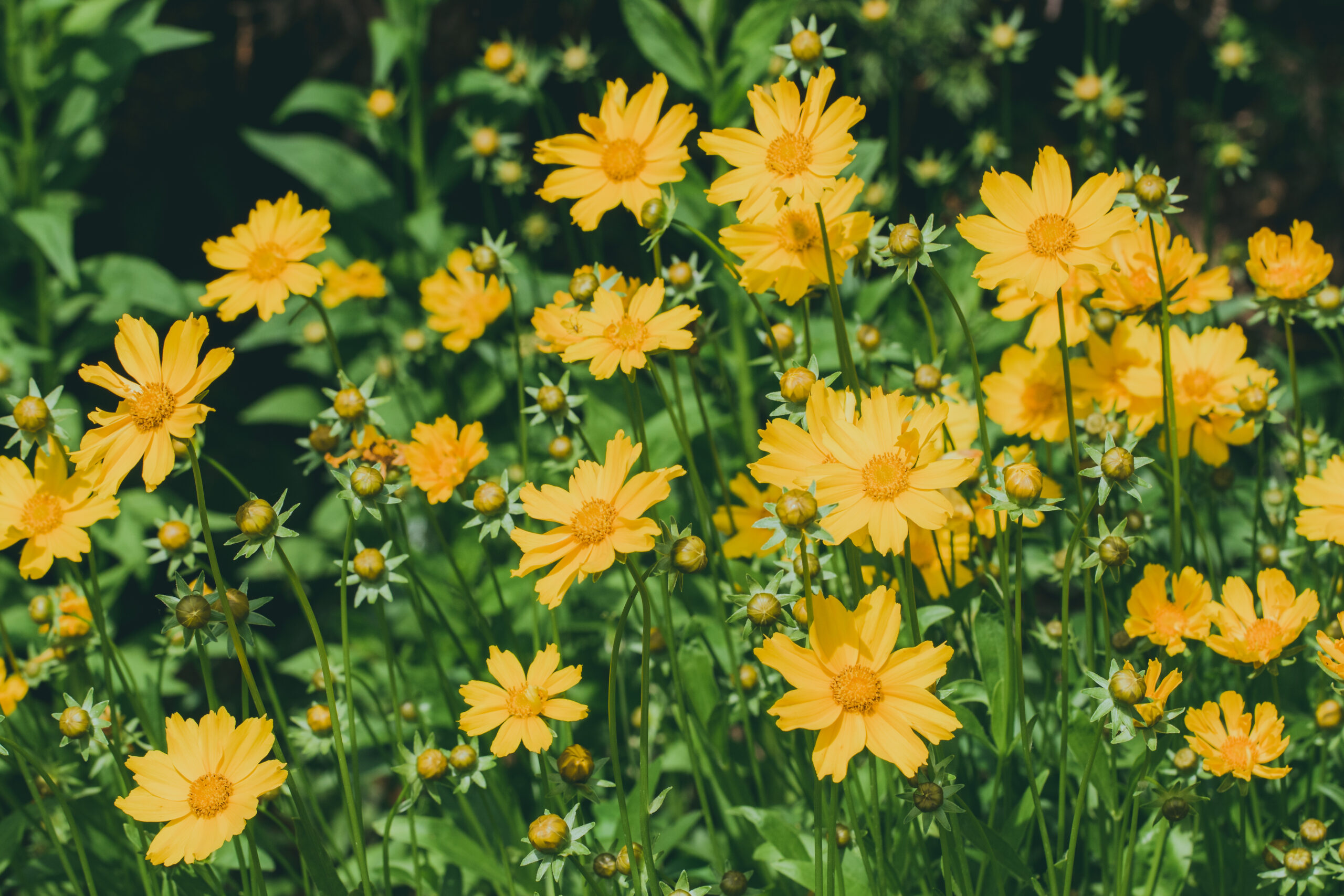
Coreopsis is a bright, cheerful flower that comes in shades of yellow, pink, and red. Its daisy-like blooms attract a variety of pollinators, including butterflies and bees. Coreopsis is drought-tolerant and thrives in full sun, making it easy to grow in most gardens. The plant blooms from early summer to late fall, offering nectar over an extended period. Its low-maintenance nature and vibrant color make it a garden favorite.
Salvia (Sage)
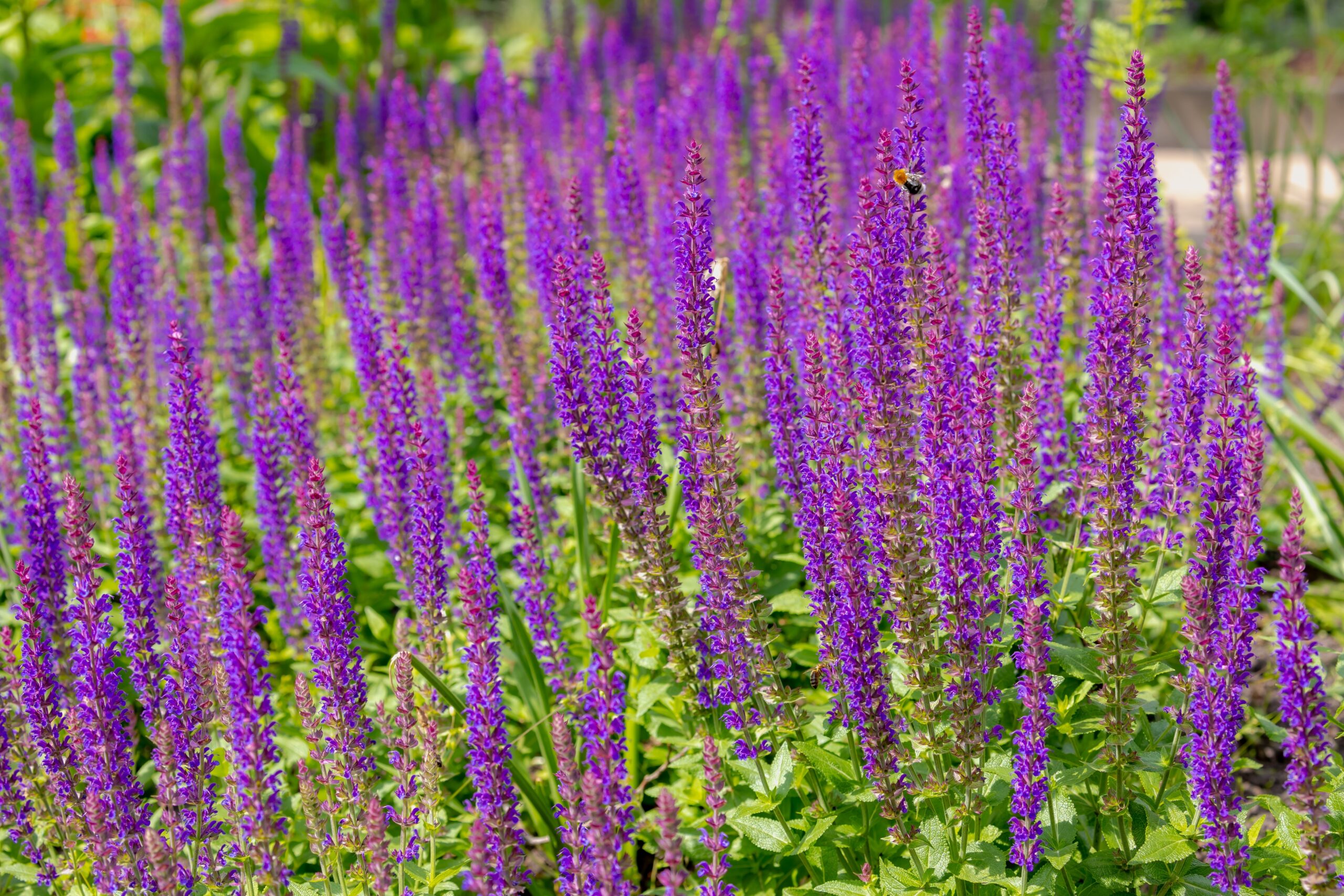
Salvia’s tubular blooms are a favorite of both bees and butterflies. Its flowers come in various shades, from blue to purple to red. Salvia thrives in sunny spots with well-drained soil and requires little water once established. This perennial blooms from late spring to fall, ensuring a consistent food source for pollinators. Its strong fragrance also helps deter pests, making it a resilient garden addition.
Catmint (Nepeta)
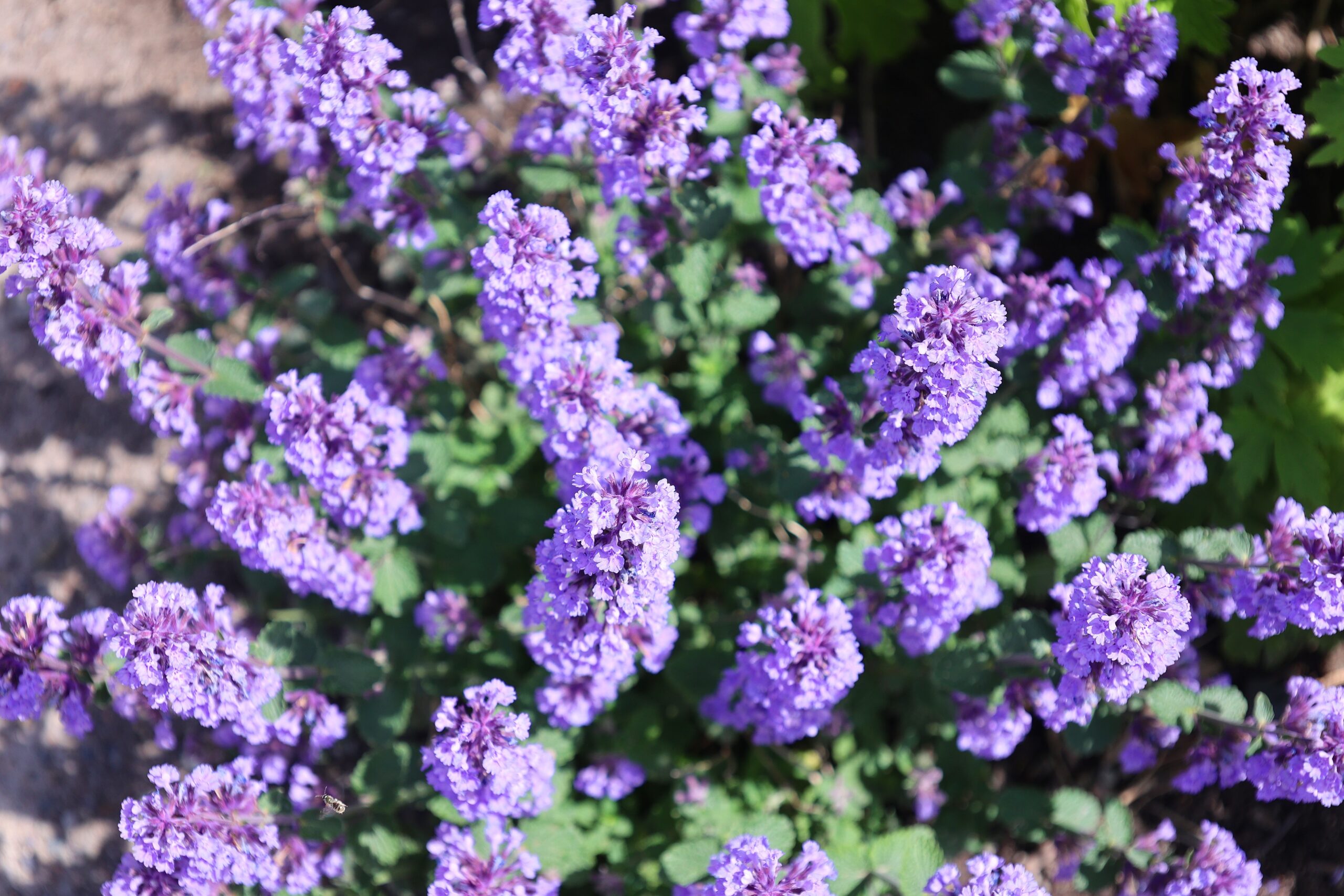
Catmint is a hardy perennial with fragrant, blue-purple flowers that bloom from late spring to early fall. Its aromatic foliage attracts bees and butterflies alike, making it a perfect pollinator magnet. The plant thrives in full sun and well-drained soil, tolerating both drought and poor conditions. Catmint is low-maintenance and deer-resistant, providing a long-lasting splash of color. Its soft, flowing growth adds texture to garden borders and walkways.
Shasta Daisy (Leucanthemum x superbum)
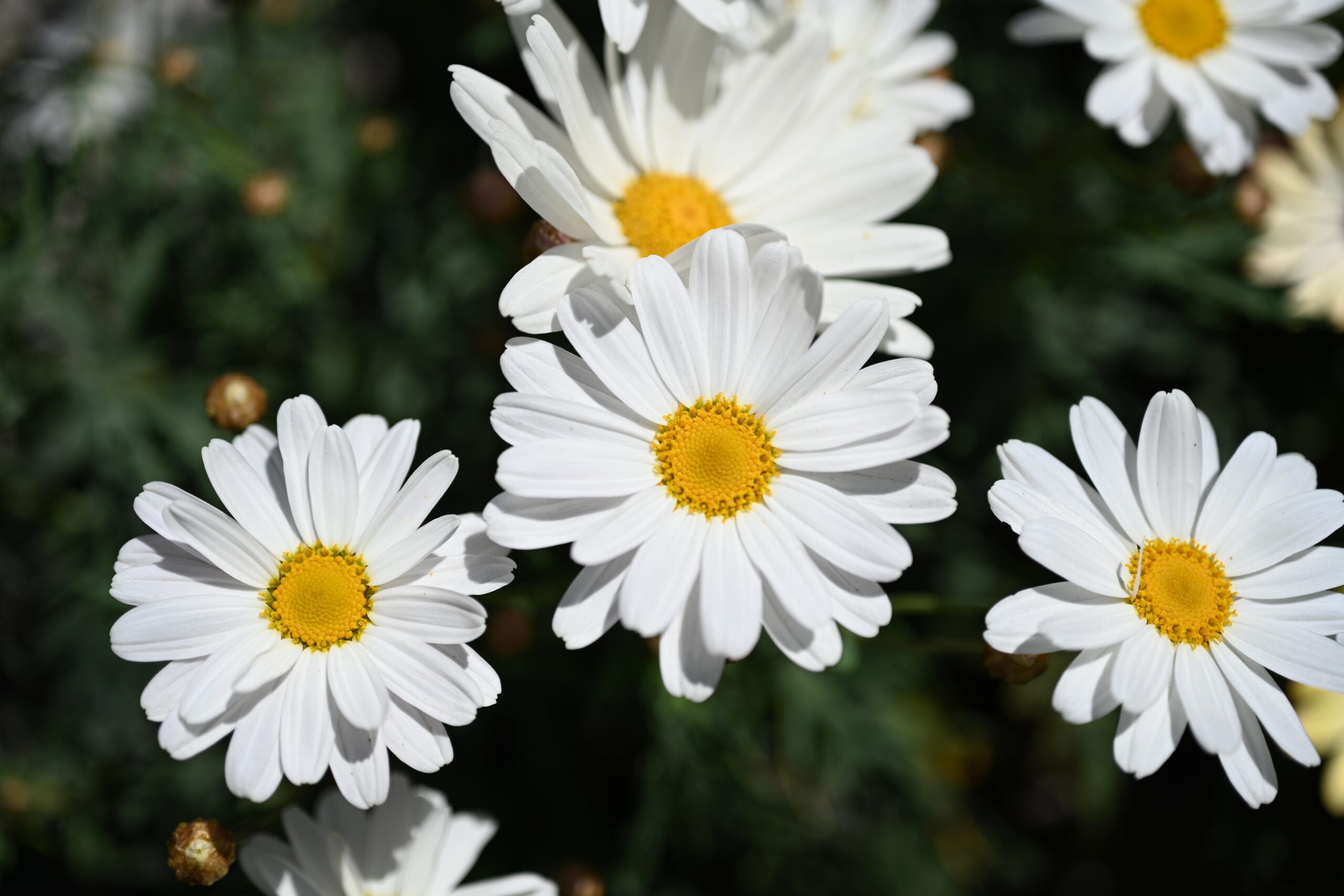
Shasta Daisies are bright, cheerful flowers that attract a wide range of pollinators. Their classic white petals with a yellow center make them easy to spot in any garden. These perennials bloom from early summer to fall, providing consistent nectar for butterflies and bees. Shasta Daisies prefer full sun and well-drained soil, making them easy to grow. They also make excellent cut flowers, adding charm to both gardens and bouquets.
Yarrow (Achillea millefolium)
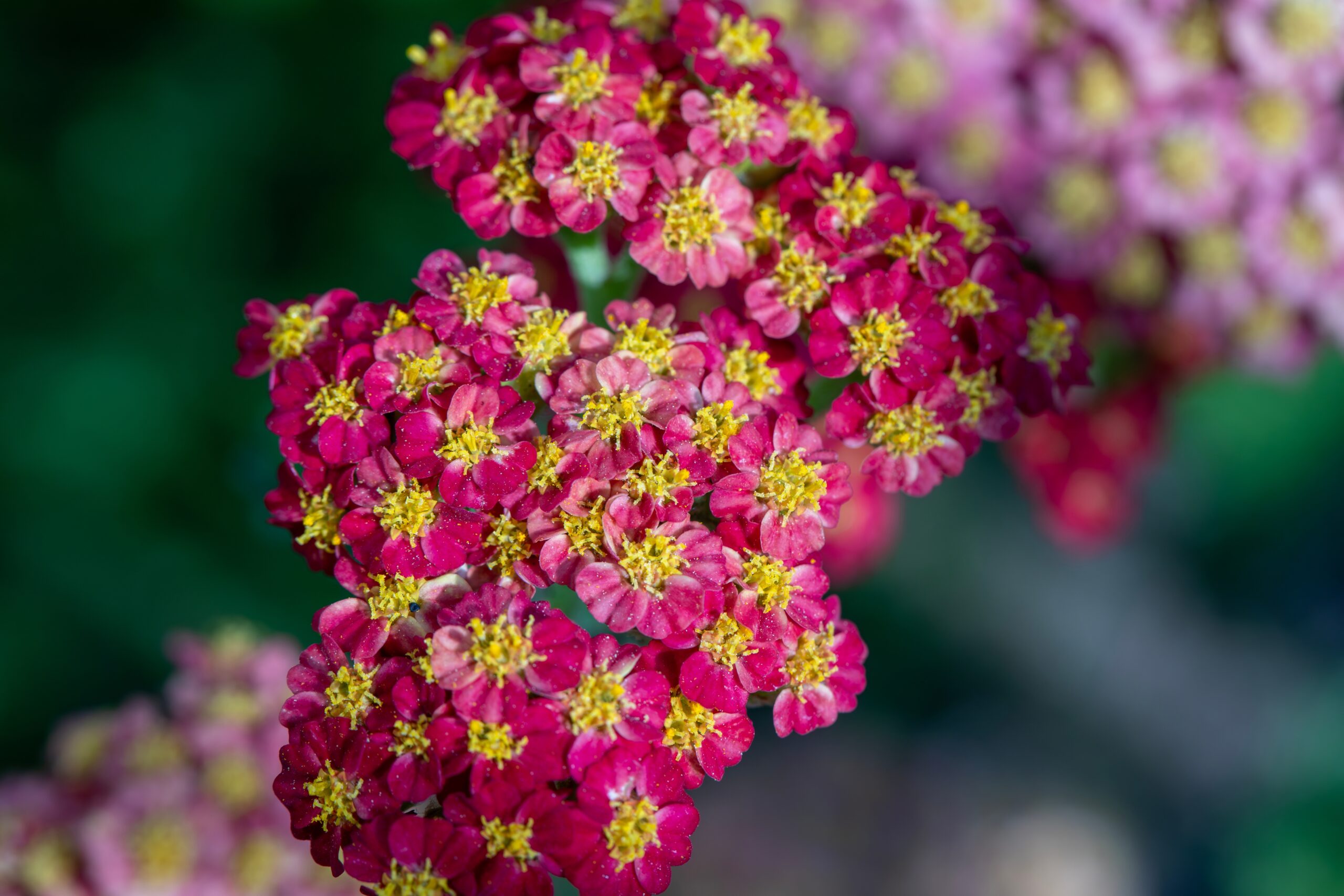
Yarrow is a tough perennial known for its flat clusters of small flowers that come in shades of yellow, pink, red, and white. It blooms from early summer to fall, offering nectar that attracts bees and butterflies. Yarrow is drought-tolerant and thrives in poor, well-drained soil, making it perfect for low-maintenance gardens. Its fern-like foliage adds texture, and it also has medicinal uses, making it a versatile plant.
Anise Hyssop (Agastache)
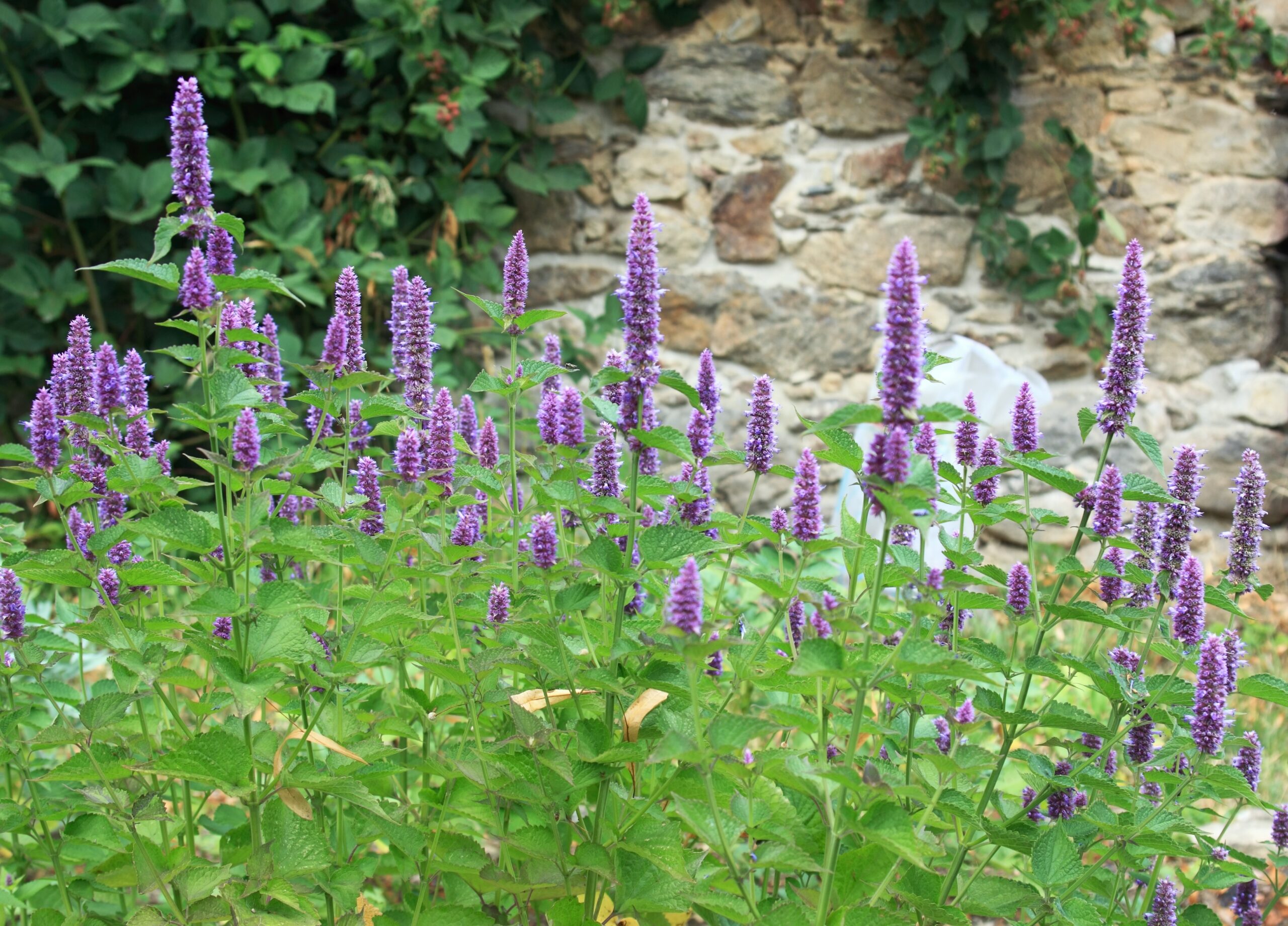
Anise Hyssop is a pollinator favorite with its tall spikes of purple flowers that bloom from midsummer to early fall. Bees and butterflies are drawn to its sweet, licorice-scented blooms. This perennial thrives in full sun and well-drained soil, tolerating both drought and poor conditions. Anise Hyssop is easy to grow and resistant to deer, making it a reliable choice for gardens. Its fragrant leaves can also be used in teas or as a seasoning.
Aster
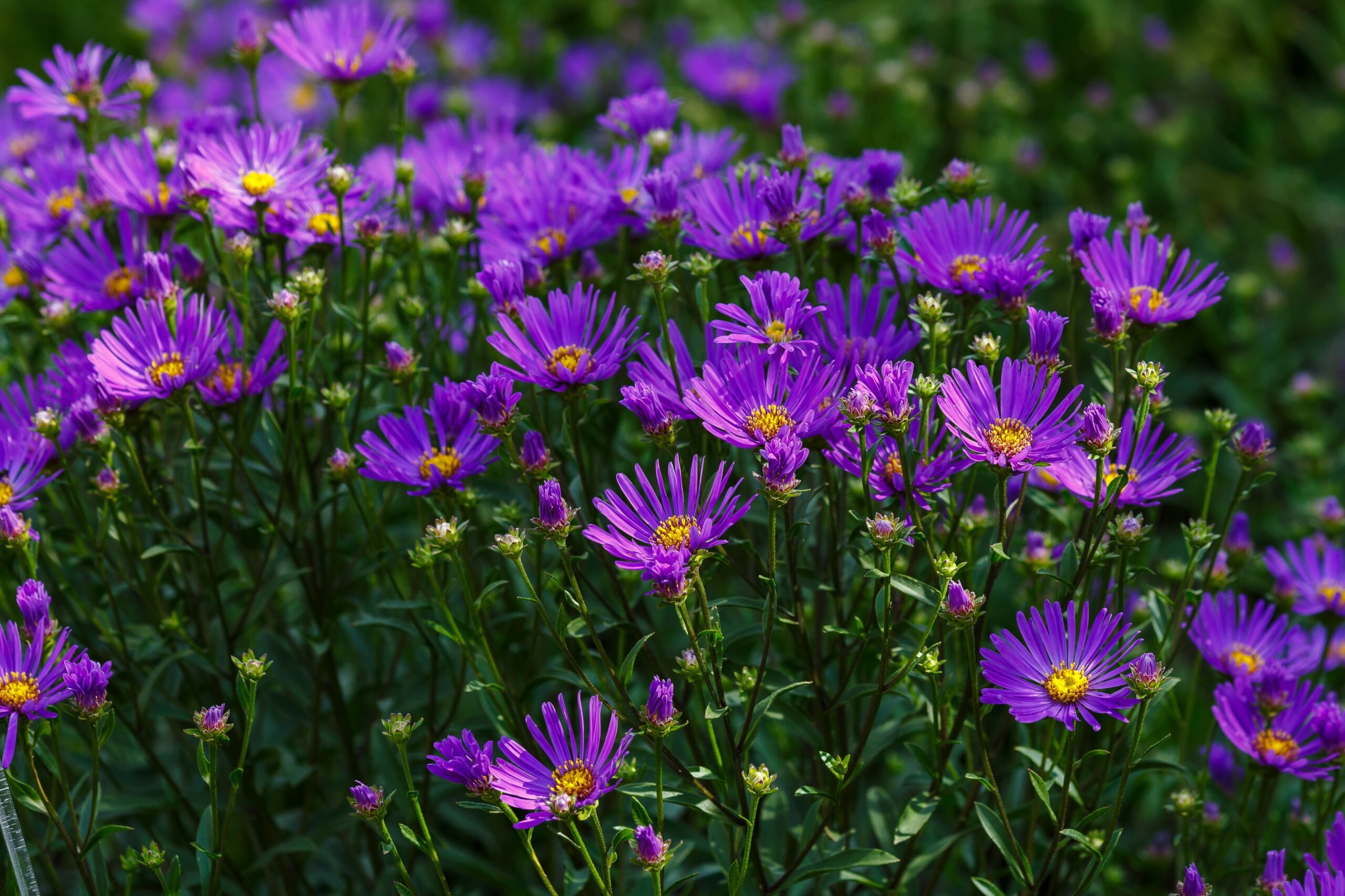
Asters are late-blooming perennials that provide vital nectar for butterflies and bees in the fall. Their daisy-like flowers come in shades of purple, pink, and white, brightening up gardens when many other plants have faded. Asters thrive in full sun to partial shade and well-drained soil. These hardy plants are drought-tolerant and require little maintenance. Their late-season blooms make them essential for extending the pollinator season.
Joe-Pye Weed (Eutrochium purpureum)
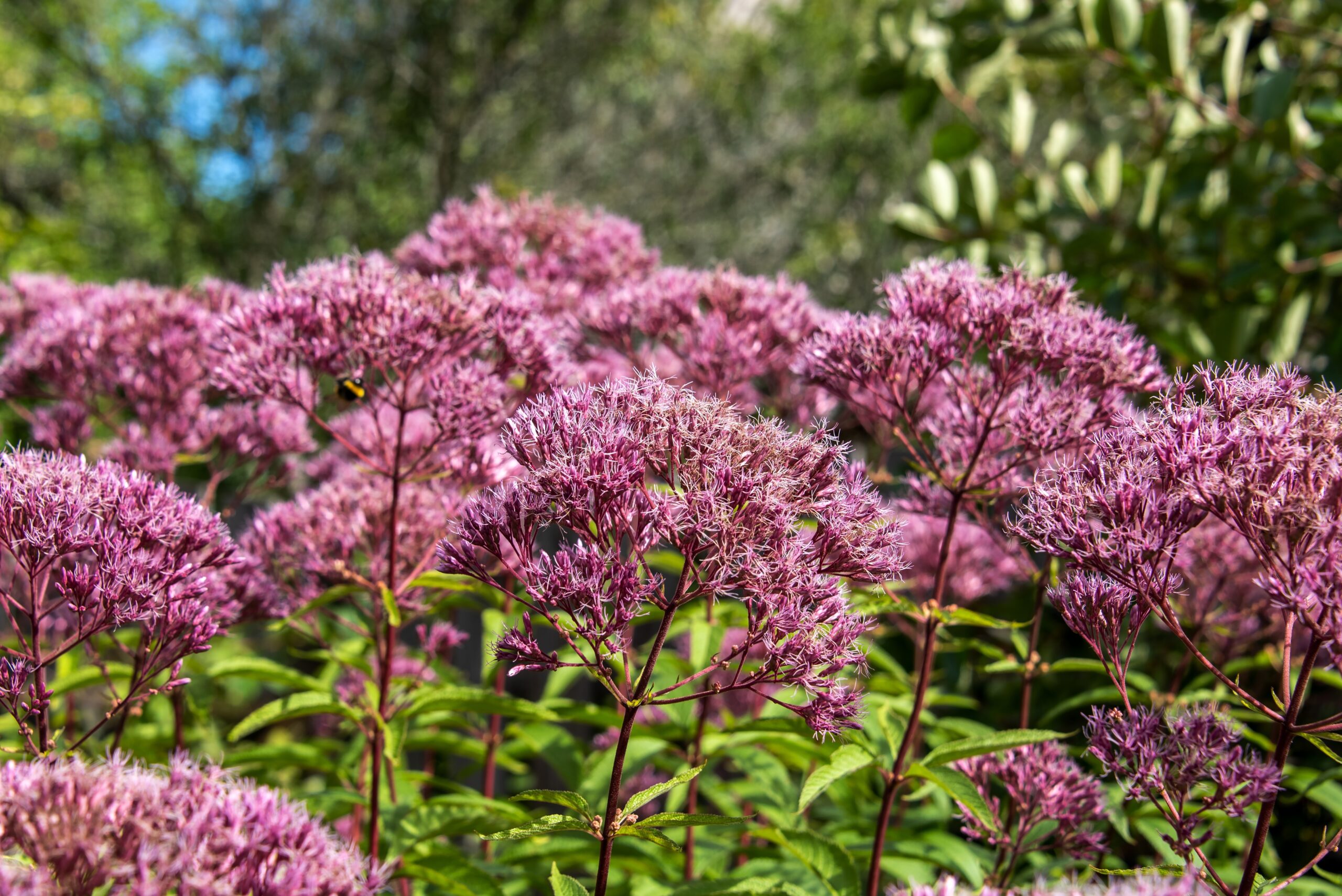
Joe-Pye Weed is a tall, native perennial with clusters of pinkish-purple flowers that bloom in late summer. Butterflies, especially monarchs, are drawn to its nectar-rich blooms. This plant thrives in full sun to partial shade and prefers moist, well-drained soil. Joe-Pye Weed is low-maintenance and attracts a variety of pollinators, making it ideal for naturalized gardens. Its towering height also adds vertical interest to landscapes.
Milkweed (Asclepias)
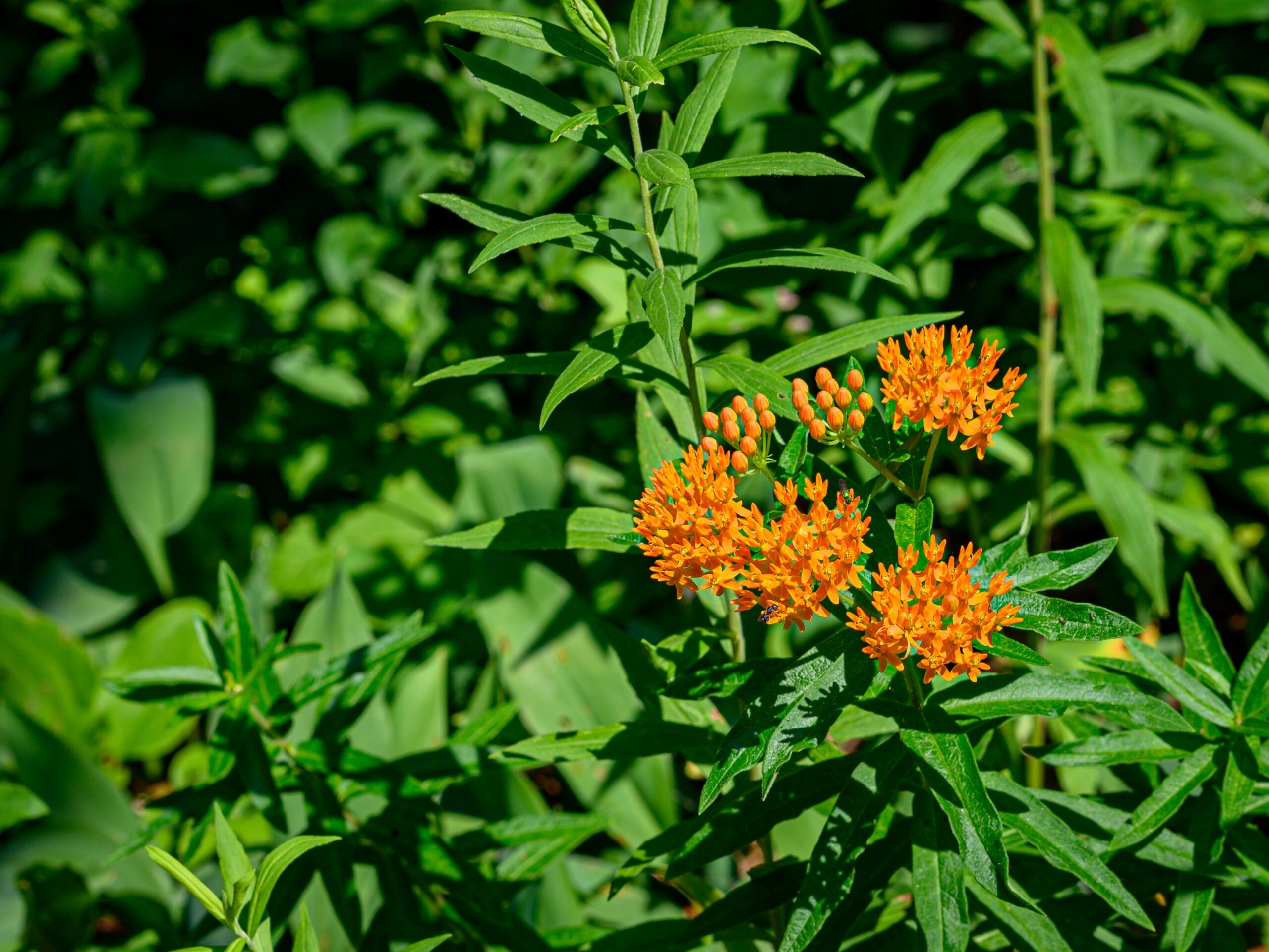
Milkweed is essential for attracting monarch butterflies, as it serves as both a nectar source and host plant for their caterpillars. Its bright orange, pink, or white flowers bloom from early summer to fall. Milkweed grows best in full sun and well-drained soil, and it is drought-tolerant once established. This perennial is easy to grow and vital for supporting butterfly populations. Its clusters of blooms add vibrant color to any garden.
Phlox
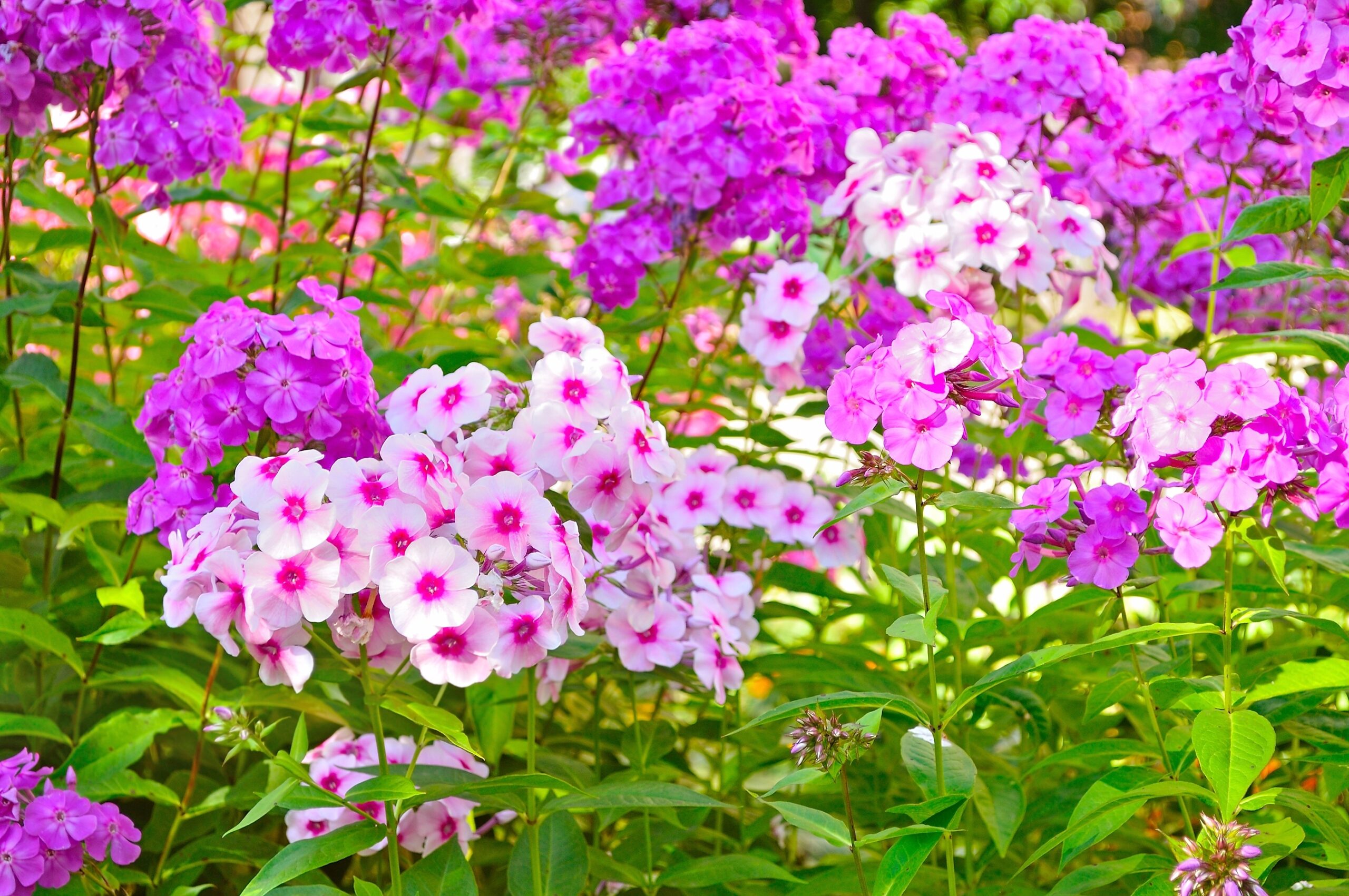
Phlox is a fragrant perennial with clusters of pink, white, purple, or red flowers that bloom from mid-summer to early fall. Butterflies and bees flock to its nectar-rich blooms. Phlox thrives in full sun to partial shade and prefers moist, well-drained soil. Its long-lasting blooms make it an excellent addition to garden borders or wildflower meadows. Phlox is easy to grow and adds a burst of color and fragrance to any landscape.
Gaillardia (Blanket Flower)
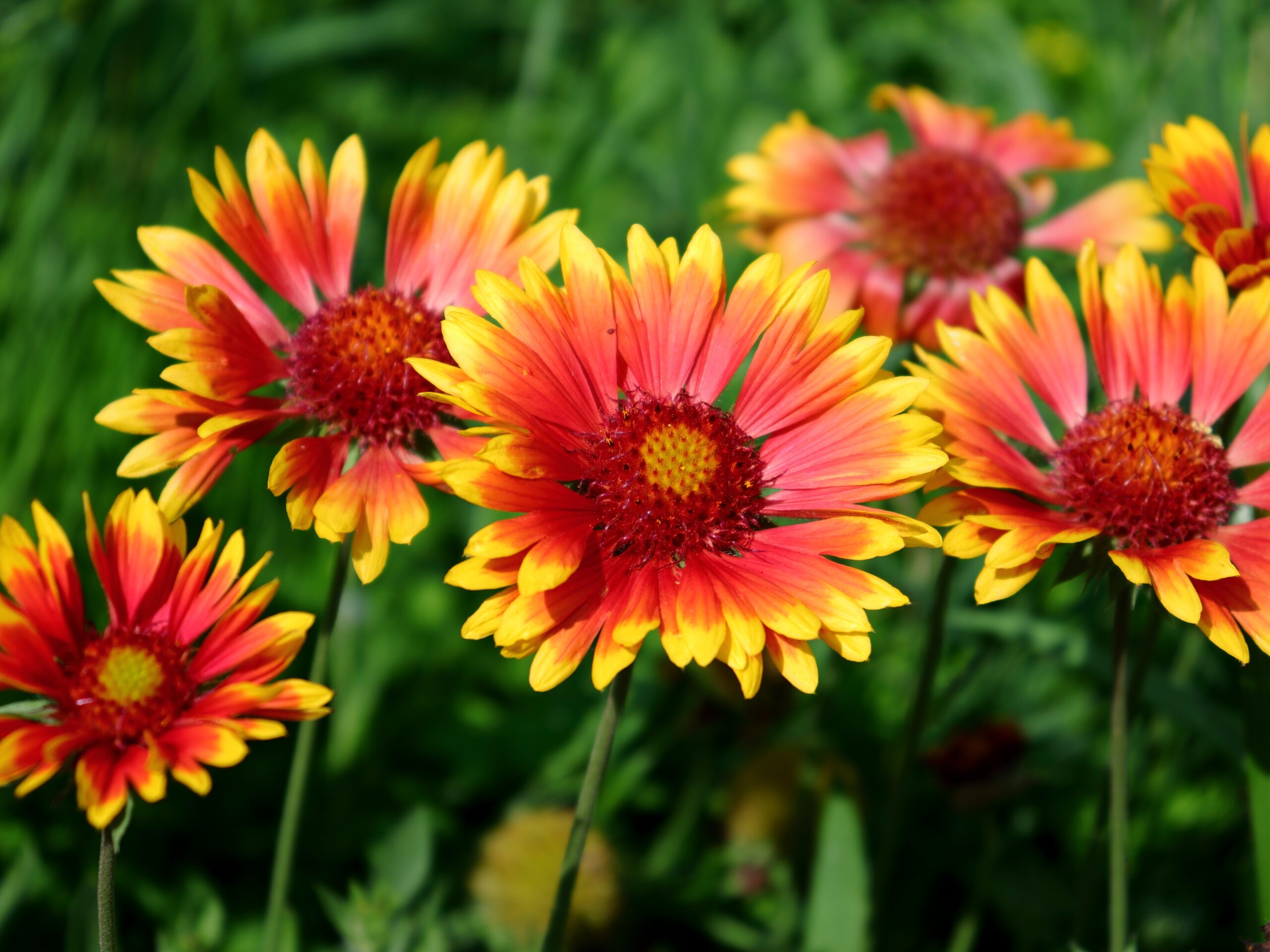
Gaillardia, also known as Blanket Flower, produces bright, daisy-like blooms in shades of red, orange, and yellow. Its long blooming season stretches from early summer to fall, providing an ongoing nectar source for bees and butterflies. Gaillardia thrives in full sun and well-drained soil, making it drought-tolerant and low-maintenance. This hardy perennial adds bold color to any garden and is resistant to deer and pests.
Lupine (Lupinus)
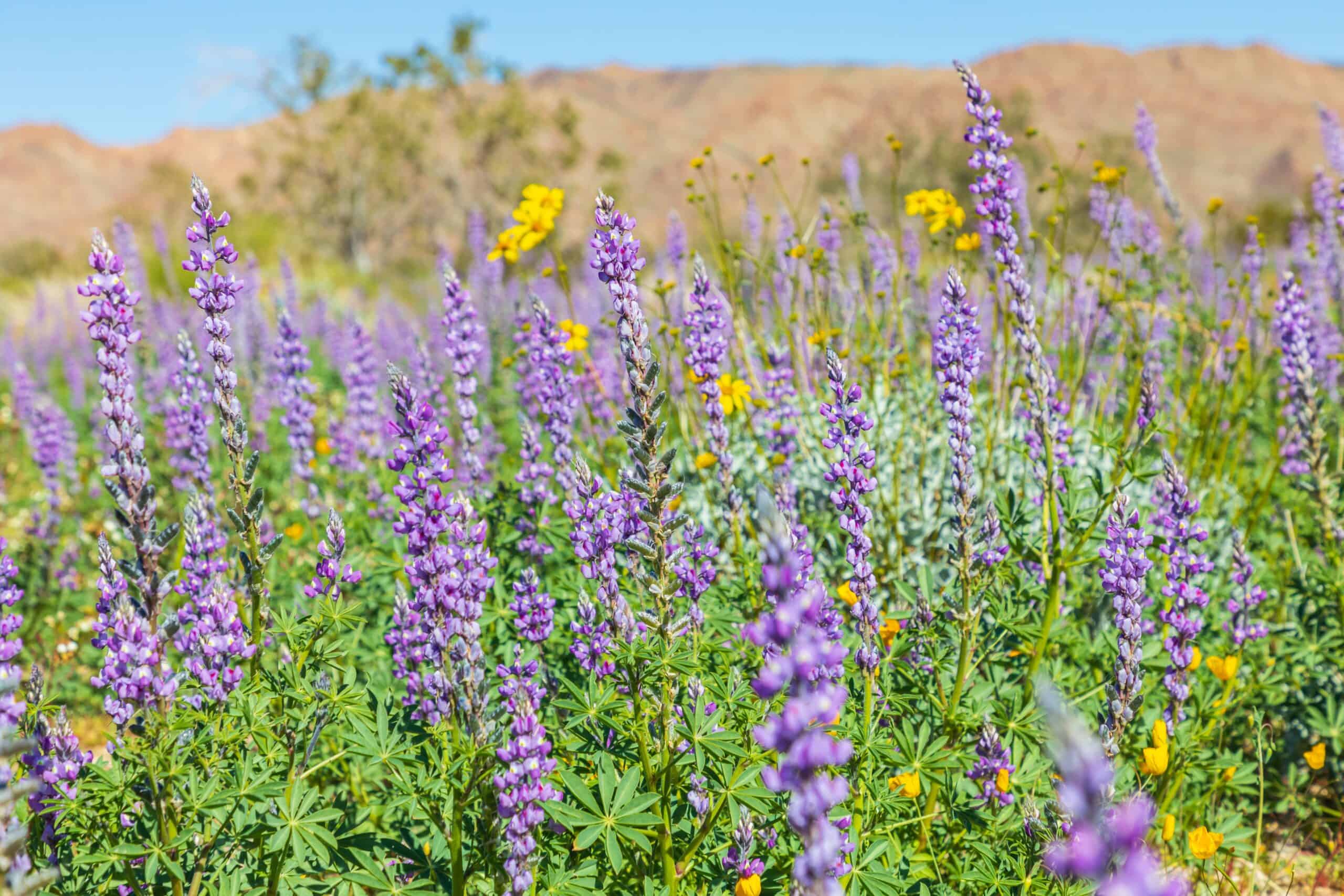
Lupine is a striking perennial known for its tall, spiky flowers in shades of blue, purple, pink, and white. Butterflies and bees are drawn to its nectar-filled blooms, which appear in late spring to early summer. Lupine prefers full sun and well-drained soil but can tolerate partial shade. Its bold, upright growth adds vertical interest to gardens, and it also enriches the soil with nitrogen, benefiting nearby plants.
This article originally appeared on Rarest.org.
More from Rarest.org
9 Highly Valued Antique Tea Sets and Their Current Market Worth
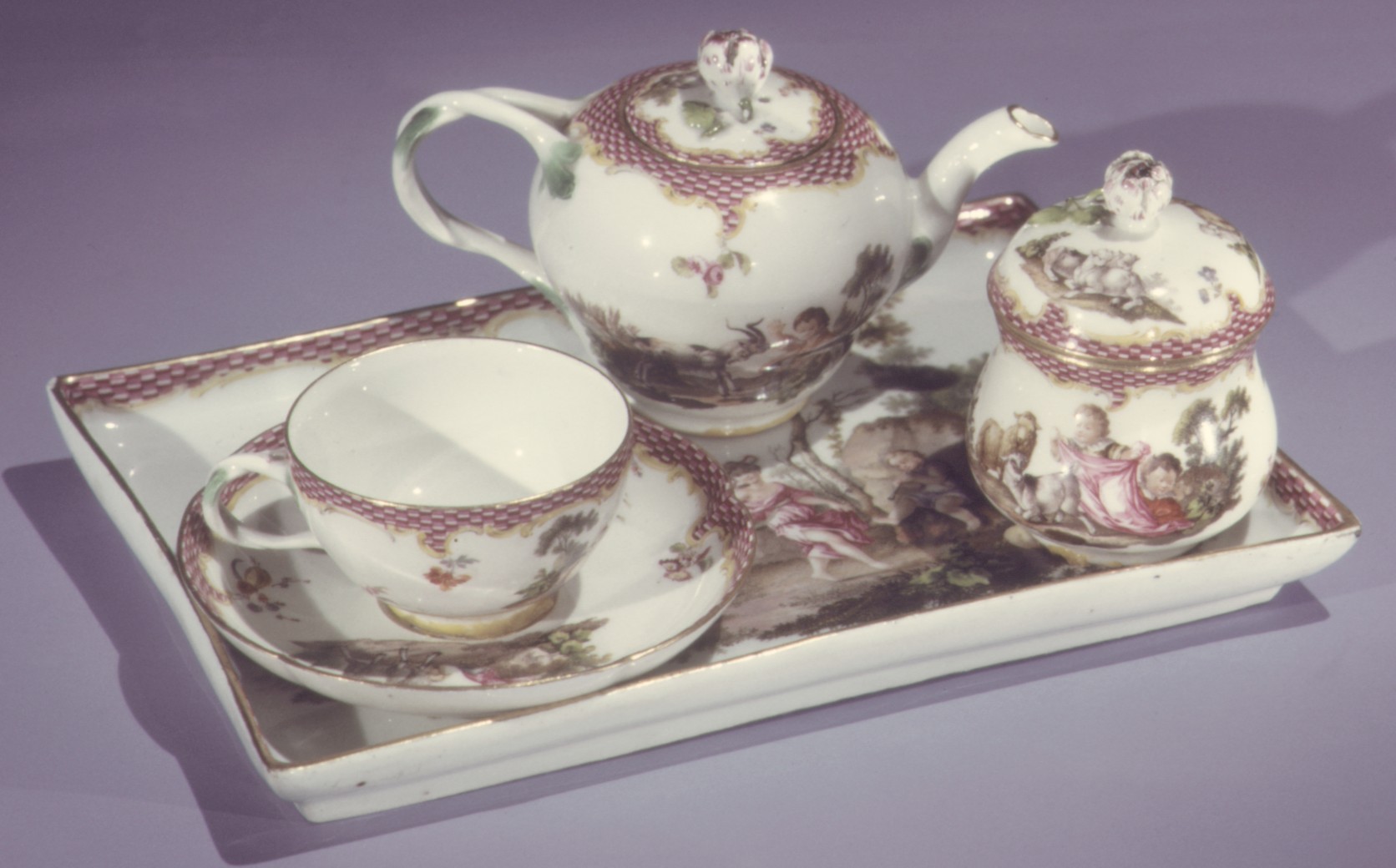
Antique tea sets are cherished for their artistry and historical value. These delicate pieces are not only beautiful but also highly sought after by collectors. Read More.
15 Highly Sought-After Obsolete Stock Certificates
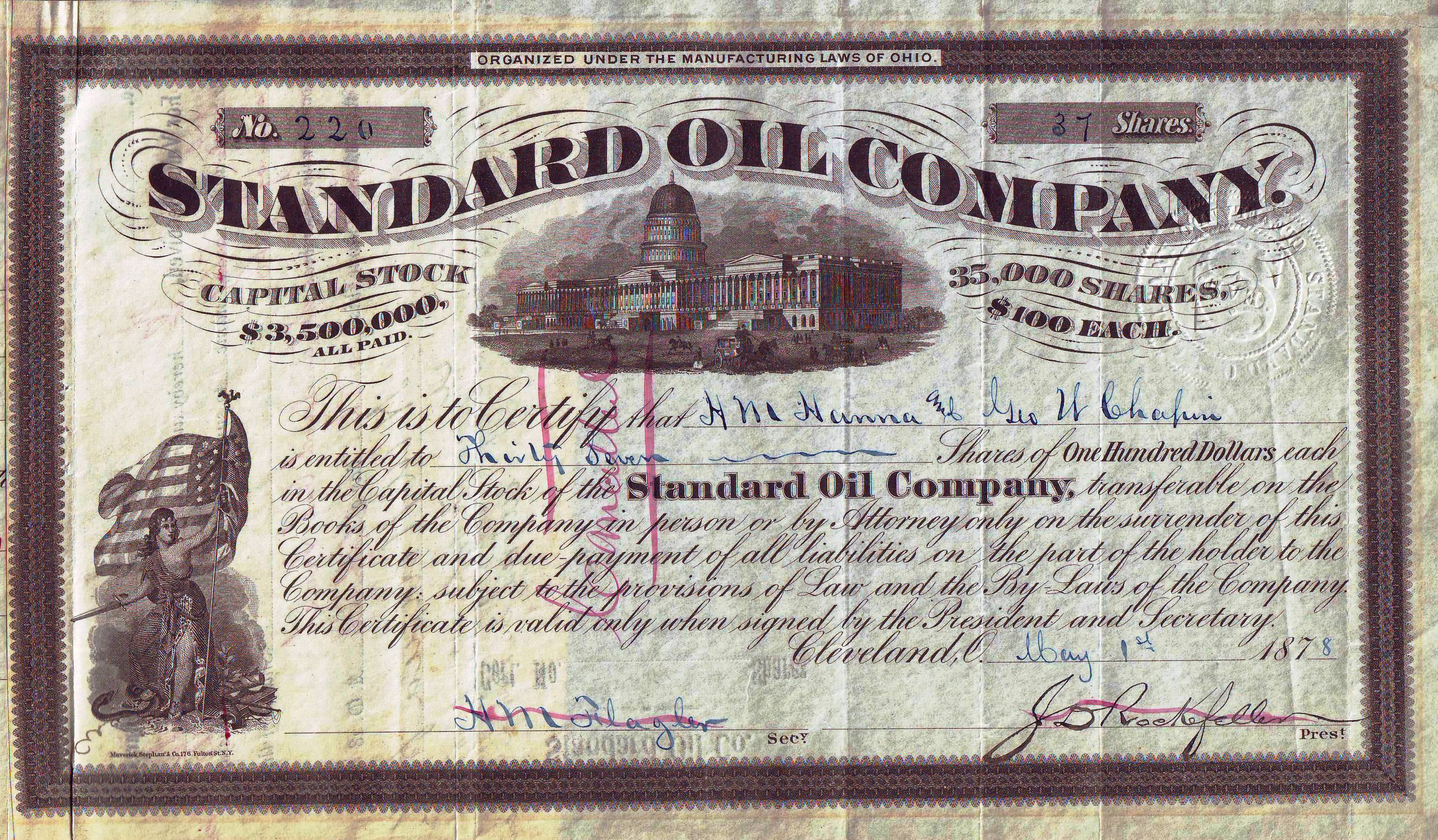
Collecting obsolete stock certificates has become a popular hobby for those fascinated by history and industry. Read More.
1992 Kennedy Half Dollar Value Guide
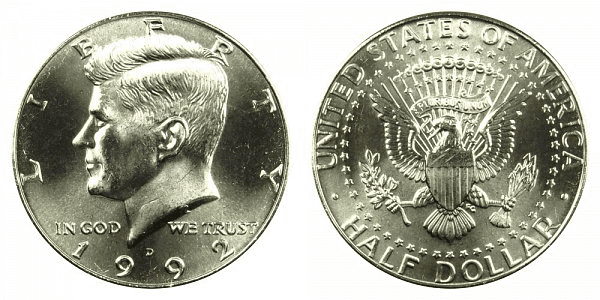
The standard-struck 1992 Kennedy half-dollar is made of 75% pure copper core and 25% clad nickel. Read More.
